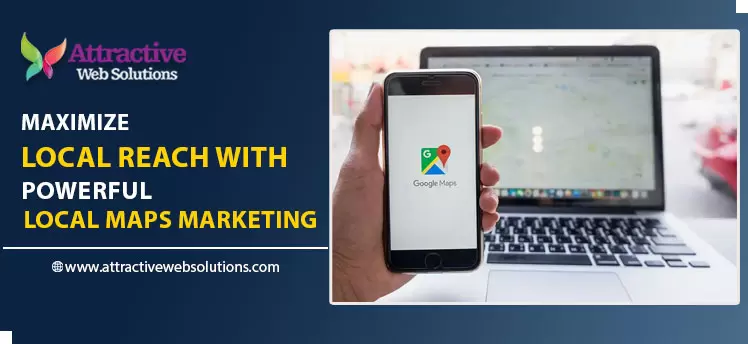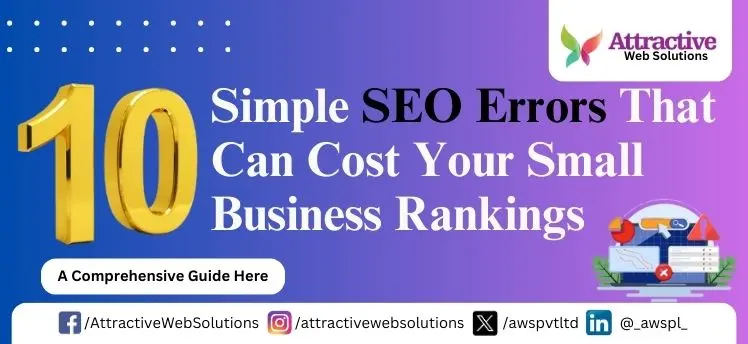Local maps marketing has become an indispensable part of a successful local business strategy, especially with the rapid growth in local search queries like “near me” searches on mobile devices. If you’re looking to build a strong presence in your community and attract more local customers, leveraging local maps marketing is essential. Let’s dive deep into what it entails, why it matters, and how your business can benefit from a powerful local maps marketing strategy.
1. What is Local Maps Marketing?
Local maps marketing is the process of optimizing a business’s presence on online maps, specifically on platforms like Google Maps, Apple Maps, and Bing Places. The primary goal is to make it easy for customers within a specific geographic area to discover, learn about, and engage with a local business.
Unlike traditional SEO, which targets a broader online audience, local maps marketing focuses specifically on users who are in proximity to a business and likely to visit or make a purchase soon. This type of marketing combines elements of location-based SEO, business listing management, and reputation management.
Key Elements of Local Maps Marketing:
- Google My Business (GMB) listing optimization
- Local citations and NAP (Name, Address, Phone) consistency
- Customer reviews and ratings
- Local backlinks and mentions
- Geotargeted ads and offers
2. Why Local Maps Marketing is Essential for Business Success
With over 46% of Google searches having local intent, a well-executed local maps marketing strategy has the power to bring tremendous visibility to your business. Local maps marketing is a critical element for businesses that rely on foot traffic or local clientele.
Benefits of Local Maps Marketing:
- Higher visibility in local search results
- Increased customer trust through positive reviews and business details
- Enhanced brand reputation in the local market
- Better foot traffic and conversions from nearby customers
- Real-time customer engagement with features like Google Q&A and reviews
With more customers looking for nearby businesses, having a prominent presence on maps ensures you’re part of their decision-making process.
3. How Google My Business Powers Local Maps Marketing
Google My Business (GMB) is the cornerstone of local maps marketing. By creating and optimizing a GMB profile, businesses can manage their online presence across Google Search and Maps. Your GMB listing gives essential information about your business, like your hours, location, photos, and customer reviews.
GMB Features that Boost Local Maps Marketing:
- Business Description – Summarize what your business offers.
- Categories and Services – Define what makes your business unique.
- Google Posts – Announce promotions, news, and events.
- Photos and Videos – Engage potential customers visually.
- Customer Reviews – Enhance trust and build credibility.
Google My Business is crucial for businesses wanting to show up in the “local pack,” a prime spot on search results where customers often find and choose businesses.
4. Key Steps for Optimizing Your Local Maps Marketing Strategy
Implementing a solid local maps marketing strategy requires some essential steps, from claiming your business listings to creating content that appeals to your target audience. Here are the primary steps to take:
Step 1: Claim and Verify Your Business Listings
- Set up your Google My Business profile and ensure consistency across all listings.
- Verify your business through Google's verification process to unlock all features.
Step 2: Optimize Your Business Information
- Add an accurate address, phone number, and business hours.
- Use relevant keywords in your business description and services.
Step 3: Encourage and Manage Customer Reviews
- Ask satisfied customers to leave positive reviews on Google and other platforms.
- Respond to reviews to show appreciation and handle feedback professionally.
Step 4: Add High-Quality Photos and Videos
- Use images that highlight your products, services, and premises.
- Update photos frequently to keep your listing fresh.
Step 5: Post Regular Updates and Offers
- Use the Google Posts feature to highlight new promotions, events, and news.
- Share content that resonates with local audiences and encourages them to visit.
Step 6: Engage with Customers on Google Q&A
- Monitor and respond to questions potential customers ask on your GMB profile.
- Be informative and helpful to encourage potential customers to choose your business
5. Advanced Local Maps Marketing Strategies
Once you’ve covered the basics, there are advanced tactics to further enhance your local maps marketing efforts. Here are some strategies to go above and beyond:
Leverage Local Backlinks
- Partner with local businesses and organizations for backlink opportunities.
- Feature local sponsorships and collaborations on your website.
Invest in Geotargeted PPC Ads
- Use Google Ads to create location-targeted campaigns for users within a specific radius of your business.
- Add location extensions to your ads for even greater visibility in Google Maps.
Utilize Geotagged Content
- Geotag your photos when uploading to Google My Business and social media platforms.
- Create location-specific blog posts to capture additional local traffic.
Create Localized Social Media Content
- Engage with local influencers who can promote your business.
- Share user-generated content from local customers to build community trust.
By implementing these advanced tactics, you’ll be able to strengthen your presence on local maps and gain a competitive edge in your area.
6. Top Tools for Local Maps Marketing
Optimizing local maps marketing can be simplified with the right tools. These tools help streamline your local SEO tasks, manage customer reviews, and track your performance:
- JD Local – Manages local listings and monitors NAP consistency.
- MapQuest – Provides an in-depth analysis of local rankings and reviews.
- TrustPilot – Syncs business listings across platforms and improves data accuracy.
- Google Analytics – Tracks website visits from local maps sources.
- ReviewTrackers – Centralizes review management for multi-location businesses.
Each of these tools can significantly boost your local maps marketing efforts, helping you stay on top of tasks and providing valuable insights into your local performance.
7. How to Track Success in Local Maps Marketing
Tracking the success of your local maps marketing campaigns allows you to refine and improve your approach over time. Here are the main metrics and methods to gauge your local maps marketing success:
Monitor Key Metrics:
- Impressions and Click-Through Rate (CTR) on Google My Business
- Local ranking performance for keywords with local intent
- Customer engagement metrics like phone calls, requests for directions, and messages
- Review frequency and rating trends to track customer satisfaction
Use Google My Business Insights
- GMB Insights offers data on customer interactions with your listing, including how customers found you and their actions post-discovery.
Measure Foot Traffic and Conversions
- Use UTM codes on Google Posts and promotions to track conversions accurately.
- Monitor in-store visits and correlate them with local campaigns.
Tracking these metrics regularly will enable you to adjust your local maps marketing strategy for optimal results.
8. The Future of Local Maps Marketing
The landscape of local maps marketing is evolving rapidly, influenced by trends in consumer behavior and technology advancements. Staying ahead of these trends can provide your business with a distinct competitive advantage. Key future developments include:
Artificial Intelligence and Voice Search
- AI-powered recommendations and voice search will make local searches even more relevant and personalized.
- Optimize for voice search by using natural language and long-tail keywords in descriptions and Q&A.
Hyper-Local Targeting
- With hyper-local advertising, businesses can target users even more precisely, down to a few city blocks.
- Tools for geofencing and location-based push notifications are becoming more sophisticated.
Enhanced Augmented Reality (AR) Integration
- AR features, such as Google Lens, allow customers to view product details or find directions through a more immersive experience.
- Investing in AR-compatible content could be valuable for businesses in retail and hospitality sectors.
By staying attuned to these trends, businesses can continue to optimize and innovate their local maps marketing strategies to cater to evolving customer expectations.
9. Final Thoughts
Local maps marketing is an essential tool for any business aiming to attract more local customers and grow within their community. From optimizing your Google My Business listing to leveraging advanced tactics like geotargeted PPC ads, local maps marketing offers diverse ways to maximize your visibility and engage with your audience.
Whether you’re a small business or a growing brand, local maps marketing should be a vital component of your overall strategy. Start by taking small steps—claiming your business listing, encouraging reviews, and engaging with local customers online.
Ready to Boost Your Local Visibility?
If you’re ready to take your business to the next level with local maps marketing, get in touch with Attractive Web Solutions today! Let us help you create a local marketing strategy that builds visibility, attracts more customers, and drives real business results.









0 Comments